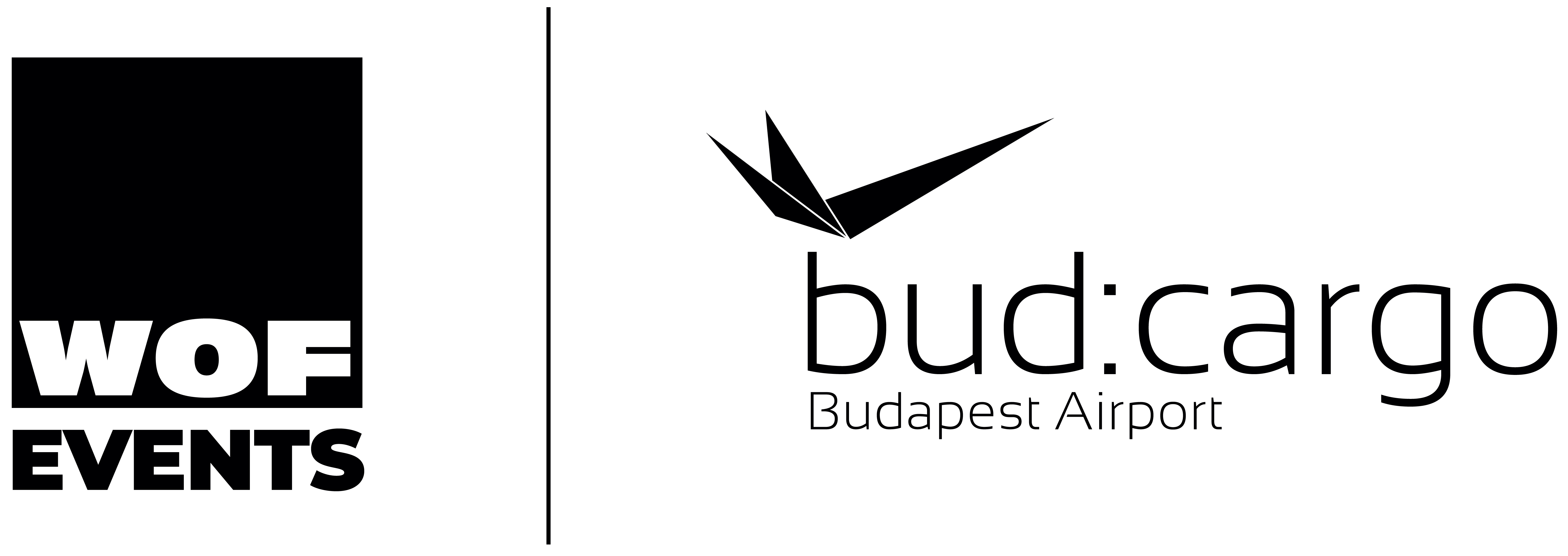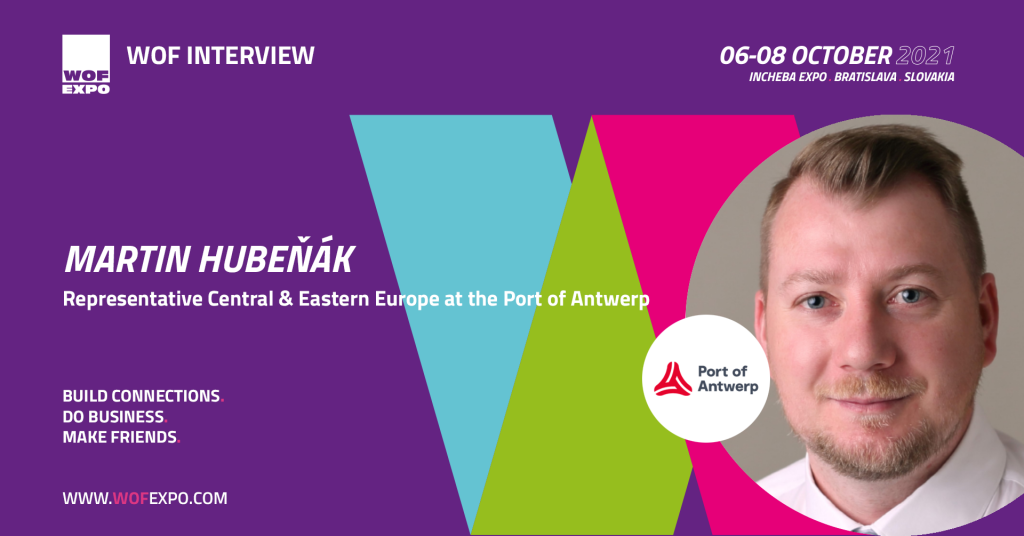Interview with Martin Hubeňák
| Mr. Martin Hubeňák has over 20 years of hands-on experience in the field of logistics and transport. Mr. Hubeňák holds a Bachelor’s degree in Management and Economy, Business School Ostrava. Throughout his career, he held various positions and gained operational experience in the supply chain, warehousing, and freight forwarding at the logistics company Exel/DHL, DB Schenker as Project Manager, and Transpoint International as General Manager. He also held the position of Director of Logistics and Production Planning at Vitkovice Steel, one of the main steel producers in the Czech Republic later He currently works as a Port Representative for Central & Eastern Europe at the Port of Antwerp, specifically in countries Czech Republic, Slovakia, and Poland. |
| 1. Do you consider the increasing vessel capacity as a disruptor of the Port Services development? As you know, the Port of Antwerp is a river port with a favorable inland location (proximity to main consumer and production areas in Europe) and with nautical accessibility for the largest containerships. Therefore, our take on this is: |
- Considering the impact on the whole logistic ecosystem
| Ship size is one thing, but what is more important is the call size (the number of containers being loaded and unloaded from that one single ship) and the number of containers destined for or originating from the hinterland. The burden this load puts on a region’s logistic system, and especially on the road network in and around the port, is what matters. This societal impact on European cities can no longer be denied. Carriers invest heavily in these mega-ships but should also realize the financial and logistic challenges it puts on other stakeholders, especially public authorities. Let us take momentum and discuss openly with all stakeholders involved how to deal with the impact, instead of focusing on the ship size. There could be other approaches than just limiting the size of ships, such as modal split engagements, etc. |
- Regarding the future competitive market situation.
| The Port of Antwerp was able to give access to these mega-ships through a dredging program. But there are limits to the capacity of a river (or canal) to be deepened. Until now the new mega-ships kept a maximum draft of 15 to 16 meters, and their actual commercial lies between 13.5 and 15 meters. But if bigger ships required even deeper water in the future, it would lead to the unhealthy situation of only one or two European ports being able to handle these ships. We absolutely oppose such a model, as it would kill a competitive system that brought a balance to the market between price and service and that proves to work to satisfaction. 2. Tell us about key areas where Port of Antwerp improved the most and why? There are several key pillars/areas on which the strategy of the port of Antwerp is based and interconnected. These are long-term visions and according to them, we plan our activities not only in Antwerp but also in other regions with which the port is connected or intensive work is being done on the connection, ie. fits into our long-term vision. It is therefore not possible to clearly highlight only one key area of improvement. So let me make a cross-section and list a few milestones that continuously move us forward and improve our customer service. An integrated solution called „Certified Pick Up“ will soon replace the existing system of PIN codes for the release of containers in the port of Antwerp. This makes the process more secure, transparent, and efficient. This new process for the release of containers referred to as “Certified Pick up” (CPu), has started as of 1 January 2021. CPu is a neutral, central data platform in which all stakeholders involved in the container import process are connected. The next one is GDP guidelines for the distribution of pharmaceutical products. Life sciences and Healthcare products require specific handling during distribution, which is laid down in the GDP (Good Distribution Practice) guidelines. Port of Antwerp has translated this for a maritime setting, making it the first port in the world to operate under the standard of the European GDP rules throughout the logistics chain. Last but not least, I would also like to mention that we have been succeeding in increasing the frequency of existing intermodal connections between the port of Antwerp and other regions and states in the last few years. Not only that, but there are also other activities, that lead to new future connections. For example, together with four other entities, we signed a Memorandum of Understanding and Assistance (Memorandum of Understanding) in the launch and development of the newly emerging combined transport terminal in Mošnov (near the city of Ostrava in the Czech Republic), in September 2019. 3. What is your opinion about positioning WOF EXPO in Central and Eastern Europe region? It is indeed an ambitious project, which brings the CEE region a unique opportunity for companies to present themselves and build new contacts within other regions and countries as well. The CEE region is very important for the supply and logistics chain, in short, it is gaining its importance in many respects, not only because of the dense concentration of growing industrial enterprises but also because of its strategic location, connecting society and consumers in Europe. At the moment, this is also reflected in transport between western and eastern destinations (New Silk Road). This is also confirmed at this time when the capacities for supply, handling, distribution, container transport, their depots, and other infrastructures necessary for efficient logistics are being increased. Let’s hope that our participation in the WOF EXPO and at the same time our first experience will not be taken away by the pandemic and we will meet each other on the stage and at the networking table in September 2021. I will keep my fingers crossed. 4. What will be the impact of Covid19 for your further business development? Due to Covid19, further business development plans had to be changed and adapted to this a completely new and unexpected situation. The most important task was to keep the port as operational as possible and to introduce precautionary measures, which are still in place in order for everything to work as expected. Right now, we are doing well and we can further focus on our other activities and plans In 2020, the port demonstrated its resilience even in difficult times. Despite the crisis, it made progress in terms of greener energy, digitalization, and mobility through various pioneering projects. The business plan for the coming year continues to build on the 2018-2020 business plan with its three strategic priorities of sustainable growth, targeted transition, and resilience. As such, Port of Antwerp aims to continue playing a pioneering role in the future development of the port, in order to eventually become the global port that reconciles economy, people, and climate. Personally, I also think that it has moved us much faster in some matters and approaches and has also opened the door, both to new opportunities and to think about whether it is possible to do things differently and often more effectively. At the same time, we know that not all subjects, whether in Antwerp or other regions, will find it easy in terms of the economic situation and possible further development. Therefore, we are ready to support our partners so that we can stand together during these times and establish even stronger partnerships and business relationships in the future. |
 | The Antwerp Port Authority – As Europe’s second-largest port, the port of Antwerp is Belgium’s largest economic engine: more than 300-line services to over 800 destinations ensure global connectivity. The Port of Antwerp annually handles around 231 million tonnes of international maritime freight and is home to Europe’s largest integrated chemical cluster. The Port of Antwerp accounts, directly and indirectly, for a total of around 143.000 jobs and more than €20 billion added value. There are five main types of cargo: container cargo, liquid bulk, dry bulk, breakbulk and ro-ro.
True to its mission ”a home port vital for a sustainable future”, Antwerp Port Authority aims to flexibly respond to a rapidly evolving maritime market, allowing the port to continue playing its role as a leading world port. The emphasis in this respect is on cooperation, adaptability, a strong focus on innovation and digitization, and on sustainable added value, as well as on responsibility towards society.
www.portofantwerp.com |

